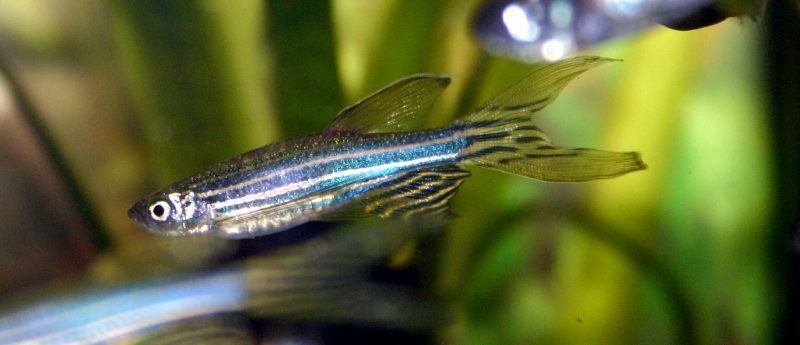Zebrafish clue towards understanding spinal cord regeneration

Researchers from Duke University Medical Center (Durham, NC, USA) and Max Planck Institute for Heart and Lung Research (Bad Nauheim, Germany) have identified a growth factor that is produced in humans, and necessary and sufficient to stimulate glial bridging and natural spinal cord regeneration in zebrafish.
Zebrafish make excellent models for human disease and injury modeling thanks to their ease of rearing and storing for study, 70% genetic similarity to humans and their relative physiological similarity; this is, they have a CNS, teeth, a heart, and so on. One significant difference is that they have considerably greater regenerative capacity than humans: they can regrow lost fins and repair spinal cord injuries.
Supportive cells in the zebrafish nervous system bridge the gap upon spinal cord severing, which allows new neural tissue to regrow and restore the spinal cord to full function within weeks. Now, NIH-funded researchers from Duke University Medical Center (Durham, NC, USA) and Max Planck Institute for Heart and Lung Research (Bad Nauheim, Germany) have identified the molecule behind this process, which is also produced in humans and is therefore an exciting avenue of research for developing therapeutics for spinal cord injuries.
A genetic screening analysis for secreted factors that are upregulated during zebrafish spinal cord regeneration, led by Kenneth Poss and postdoctoral fellow Mayssa Mokalled of Duke University, identified seven genes with potential involvement in the process. ctgfa was induced in and around glial cells — the cells that participate in initial bridging events allowing neurons to fill in the gap, and was therefore a lead candidate for investigation.
Mutations in ctgfa disrupted spinal cord repair, indicating its importance in the repair process. Furthermore, transgenic ctgfa overexpression and local delivery of human CTGF recombinant protein near the injury site accelerated bridging and functional regeneration. They formed glial bridges more effectively than usual, even with the human CTGF, which is 90% similar to the zebrafish protein, allowing spinal nerve cells to regenerate faster to heal the wound and the fish to progress from being paralyzed to swimming around normally.
Overall, the research means that CTGFa is essential and sufficient in regenerating its severed spinal cord, offering a promising lead for researchers seeking to develop regenerative therapies for spinal cord injuries. Although the molecule is large, the team indentified the element requires for healing, which could allow development of a small molecule therapy.
Further work towards this aim involves understanding why humans do not have the same regenerative capacity despite producing CTGF, and seeing if application of CTFG has a similar effect in mice as it did in zebrafish.
Sources: https://directorsblog.nih.gov/2016/11/15/regenerative-medicine-new-clue-from-fish-about-healing-spinal-cord-injuries/; Mokalled MH, Patra C, Dickson AL, Endo T, Stainier DY, Poss KD. Injury-induced ctgfa directs glial bridging and spinal cord regeneration in zebrafish. Science 354(6312), 630—634 (2016).